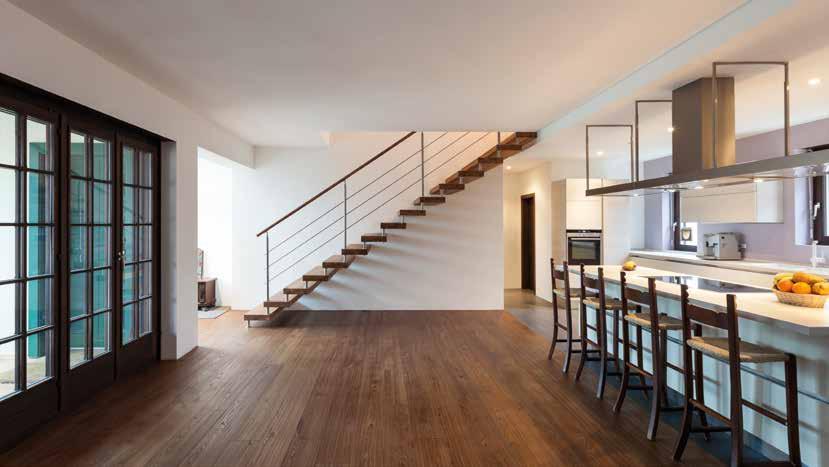3 minute read
Special Silan adhesives for LVT, PVC and vinyl floors
Next Article
THEY GO MARCHING ON
MANY MORE ASSETS THAN JUST ELASTICITY AND GREAT STRENGTH
People sometimes refer to silane adhesives as hybrid polymers and we’ve covered them in the past in relation to glueing wooden floors. However, they can cope with more than just wood and in various cases are also suitable for PVC, LVT, and vinyl floors.
We’ve outlined the benefits of silane adhesives (MS polymer adhesives or MSP polymer adhesives) on several occasions. The main ones are flexibility, elasticity, and strength (resistance to cracks). We note that these adhesives continue to prosper on the market, but we consider mainly how they are used with PVC, LVT, and vinyl.
Not just for wood
Perhaps the biggest asset of these items is that they offer plenty of elasticity plus great strength. They follow the dimensional movements of a floor perfectly, so they are ideal for wooden floors.
Actually, such elasticity isn’t the main argument for the floors which we have in mind here, but nevertheless they have features which make them an ideal choice. For instance, they are universal, so you hardly ever need a primer, and they make it possible to glue several materials. Think here, for instance, of floors with floor heating or floors on an anhydrite screed. In additions, parquet floor fitters will certainly appreciate the cleanliness of application.
Another nice bonus is that they are ecological adhesives (to meet the increasingly strict legislation on volatile organic compounds), which also make it possible to start using a room quickly. In this connection it’s worth pointing out that one of the major developments in recent years was that makers have been striving more and more for a total ban on the use of softeners during production. You have to regard softeners as oily fluids which are added to synthetics and adhesives to make them more flexible. Softeners have been used mainly due to their lower price, but they do have ecological and qualitative questions marks against them.
How does it work?
In order to explain silane adhesives, you have to consider exactly what they are. To sum it up simply, you use these products to create an adhesive bonding by getting water to react to silane compounds (the so called polymerisation). There is a choice of mono or dual-component adhesives. They create strong and durable adhesions through their modus operandi, but they retain their elasticity. Moreover, they do so in combination with rapid setting.
Obviously, the key question is why you should use them with floor coverings such as PVC, LVT, or vinyl. The reason is that their scope is widening all the time. If you consider a floor covering like LVT, then you notice that they are even making their mark there and acting as an alternative to classic water-based acrylic adhesives. The reason for that is that producers are finding more and more solutions for improving adhesion on ‘difficult’ floors such as PVC or vinyl thanks to polymerisation, which does guarantee good adhesion.
The price argument is now less significant
The only problem with this development is still the price. It is still rather expensive to develop polymer adhesives, certainly when we’re talking about products of high quality. However, due to a constant tinkering with the cost price of the developed polymers in combination with ongoing high quality, you can expect them to continue to gain in their market share. Moreover, that will be a market which is increasingly realising that considerably less adhesive consumption, excellent bonding power, and much faster cleaning also help to ‘save’ on costs. Moreover, producers have made a serious effort to eliminate as far as possible any harmful components so that we certainly haven’t yet heard the last word in the world of PVC, LVT, and vinyl floors.
Bona
In 2018, for the first time, Bona extended its range to include solutions for floor surfaces other than wood, including via the Bona Resilient Floor Programme (elastic floors). This range provides treatments for renovating elastic floors. Bona’s current range includes the fibre-reinforced 1-component dispersion adhesive Bona D750 for glueing PVC design floors in tiles or planks onto absorbent subfloors. Thanks to the great shearing stress resistance, D750 ensures that the emergence of seams is kept to a minimum. As a further extension, Bona is also going to develop an adapted silane adhesive within the range for elastic floors. Obviously, that silane adhesive will fit in perfectly with Bona’s existing range of high-quality and durable adhesives.

